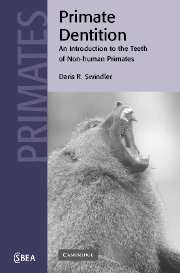9 - Pongidae
Published online by Cambridge University Press: 05 October 2009
Summary
Present distribution and habitat
This family includes three genera, Pan, Gorilla and Pongo; at present there are two species of chimpanzee (Pan troglodytes and P. paniscus), one species of gorilla (Gorilla gorilla) and one species of orangutan (Pongo pygmaeus). The gorilla, the largest living primate, lives in two major areas of Equatorial Africa: the western gorilla inhabits the western parts of the Congo basin, and the eastern gorilla ranges from the eastern lowlands of the Upper Congo to the mountains east of Lake Kivu. Both the western and eastern lowland gorillas occupy primary and secondary forests and marshes, whereas the mountain gorilla lives in montane and bamboo forests between 2800 and 3965m (Jenkins, 1990).
The two species of chimpanzee, Pan troglodytes and P. paniscus, live in Africa. The former species is widely distributed from West Africa through parts of Central Africa and as far east as Lake Victoria and Lake Tanganyika. The latter, the pygmy chimpanzee or bonobo, is limited to an area bordered by the Congo and Lualaba Rivers. Chimpanzees inhabit rain forests, savannas, and montane forests up to 3000m.
Orangutans are limited to Sumatra and Borneo, where they occupy tropical rain forests. They may be found as high as 4000m, although they seem to prefer altitudes below 500m (Wolfheim, 1983).
- Type
- Chapter
- Information
- Primate DentitionAn Introduction to the Teeth of Non-human Primates, pp. 153 - 164Publisher: Cambridge University PressPrint publication year: 2002



